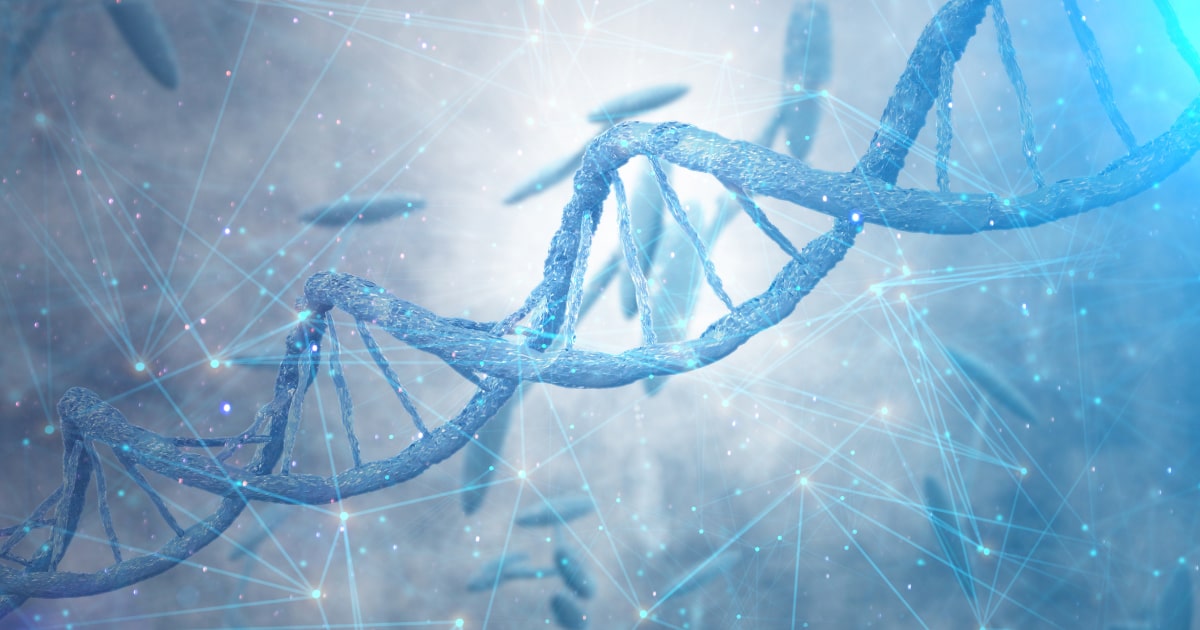
Expert Reviewed By: Dr. Brandon Colby MD
Lacrimoauriculodentodigital syndrome 3 (LADD3) is a rare genetic disorder that affects various parts of the body, including the lacrimal and salivary glands, ears, teeth, and limbs. Despite its rarity, understanding the disorder and its underlying genetic causes can lead to better diagnosis and treatment options for affected individuals. In this article, we will explore the characteristics of LADD3, the diagnostic process, and the role of genetic testing in managing the condition.
Characteristics of Lacrimoauriculodentodigital Syndrome 3
LADD3 is a complex disorder with a wide range of symptoms and severity. Some of the most common features include:
- Reduced or absent tear production, leading to dry eyes and increased risk of eye infections
- Abnormalities in the ears, such as hearing loss or malformed outer ears
- Dental anomalies, including missing or misshapen teeth
- Limb abnormalities, such as fused fingers or toes
These symptoms can vary significantly from person to person, and not all affected individuals will have all of the features associated with LADD3. The severity of the disorder can also range from mild to severe, with some individuals experiencing significant challenges in daily life, while others may have only minor issues.
Diagnosing Lacrimoauriculodentodigital Syndrome 3
Diagnosing LADD3 can be challenging due to the wide range of symptoms and the rarity of the disorder. In many cases, the diagnosis is made based on a thorough clinical evaluation, including a detailed patient history, physical examination, and specialized tests to assess the function of the lacrimal and salivary glands, as well as the ears and limbs.
In some cases, imaging studies such as X-rays or CT scans may be used to assess the extent of the abnormalities in the teeth and limbs. Additionally, hearing tests may be conducted to determine the degree of hearing loss, if any.
The Role of Genetic Testing in Lacrimoauriculodentodigital Syndrome 3
Confirming the Diagnosis
Genetic testing can play a crucial role in confirming the diagnosis of LADD3. The disorder is caused by mutations in the FGF10, FGFR2, or FGFR3 genes. By analyzing the DNA of an affected individual, it is possible to identify the specific genetic mutation responsible for the disorder, providing definitive confirmation of the diagnosis.
Carrier Testing and Prenatal Diagnosis
Genetic testing can also be used to identify carriers of the LADD3-causing mutations. This can be particularly important for individuals with a family history of the disorder, as they may be at increased risk of having a child affected by LADD3. Carrier testing can provide valuable information to couples planning a family, allowing them to make informed decisions about their reproductive options.
In some cases, prenatal testing may be available for families with a known history of LADD3. This can involve analyzing the DNA of the developing fetus to determine if it has inherited the LADD3-causing mutation from one or both parents. Prenatal testing can provide valuable information to expectant parents, allowing them to prepare for the birth of a child with LADD3 and to explore potential treatment options early on.
Guiding Treatment and Management
While there is currently no cure for LADD3, genetic testing can help guide the treatment and management of the disorder. By identifying the specific genetic mutation responsible for an individual's LADD3, healthcare providers can better understand the underlying cause of the symptoms and develop a targeted treatment plan to address the specific needs of the patient.
Treatment for LADD3 may include managing the symptoms of dry eyes, addressing dental and limb abnormalities, and providing support for hearing loss. In some cases, surgical interventions may be necessary to correct certain physical abnormalities.
In conclusion, understanding, diagnosing, and utilizing genetic testing for Lacrimoauriculodentodigital Syndrome 3 can provide valuable information for affected individuals and their families. This information can help guide treatment and management decisions, ultimately improving the quality of life for those living with this rare and complex disorder.
About The Expert Reviewer
Dr. Brandon Colby MD is a US physician specializing in the personalized prevention of disease through the use of genomic technologies. He’s an expert in genetic testing, genetic analysis, and precision medicine. Dr. Colby is also the Founder of and the author of Outsmart Your Genes.
Dr. Colby holds an MD from the Mount Sinai School of Medicine, an MBA from Stanford University’s Graduate School of Business, and a degree in Genetics with Honors from the University of Michigan. He is an Affiliate Specialist of the American College of Medical Genetics and Genomics (ACMG), an Associate of the American College of Preventive Medicine (ACPM), and a member of the National Society of Genetic Counselors (NSGC)